Don't wanna be here? Send us removal request.
Text
How to Hire a SaaS Development Team in 5 Easy Steps
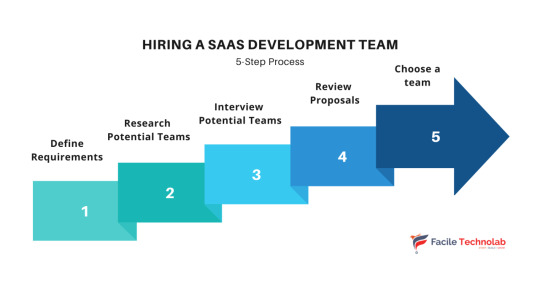
What is Software as a Service or SaaS?
Software-as-a-Service (SaaS) is cloud-based, on-demand software offered to businesses or individuals that solve problems for them.
Why do founders like SaaS?
The SaaS model offers several benefits for SaaS founders, including low startup costs, recurring revenue, and no installation required. These benefits can help SaaS founders grow their businesses, increase revenue, and achieve long-term success.
Before you start
Before starting the development process, it's important to conduct thorough market research to validate your idea and understand your target audience. This will help you to identify your unique value proposition, as well as any potential competitors in the market.
Once you have good market research and validated your idea, you will need a team if you are a non-technical founder or do not have experience building software products.
How to Hire a SaaS Development Team in 5 Easy Steps
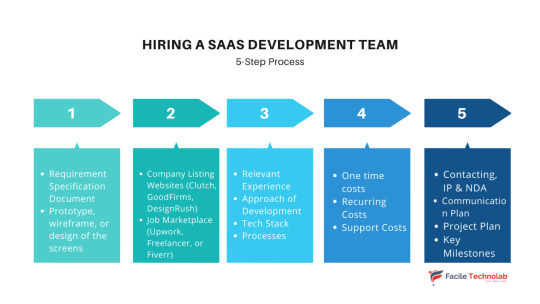
Hiring a SaaS development team is crucial for the success of your project. Choosing the right team can mean the difference between a successful launch and a project that falls short of your expectations. Here are five easy steps to help you find the perfect team for your SaaS project:
Step 1: Define your project requirements
Before beginning the hiring process, it's important to clearly define your project requirements, including the scope of the project, timelines, and budget. This will help you to determine the specific skills and experience you need in a development team. Additionally, it's important to have a clear understanding of what you want the end product to look like, including features, functionalities, and user interface.
If you are not sure how to approach preparing project requirements, SaaS Development Company generally helps you with this. Just like many other SaaS Development Companies, At Facile Technolab, we also help our customers build the project requirements.
Step 2: Research potential teams
As a SaaS Founder, you can choose to use online company listing websites like Clutch, DesignRush, or GoodFirms to filter based on pricing, location, and other criteria to prepare an initial list of companies who are good with SaaS Development to approach them. The other alternative is to use Upwork or a similar marketplace where you can find interested freelancers and companies.
Research potential teams through their past projects, client testimonials, and expertise. You can also contact past clients for references and ask for portfolio samples. This will give you an idea of the team's capabilities and experience working on similar projects. Additionally, check the team's development methodologies, testing process, and project management system to ensure they align with yours.
Step 3: Interview potential teams
Once you have narrowed down your list of potential teams, conduct interviews to further assess their skills and experience. Ask about their approach to the development process, their experience with SaaS development, and their availability to work on your project. Additionally, it's important to ask about their communication style, and how they handle change requests, bugs and issues.
Step 4: Review proposals and evaluate costs
After interviewing potential teams, review their proposals and evaluate costs. Compare the costs and timelines proposed by different teams to determine the best option for your project. Be sure to take into consideration not only the cost but also the timeline and the team's experience, approach, and availability.
Step 5: Choose a team and sign a contract
Once you have chosen a team, sign a contract that outlines the scope of the project, timelines, and payment terms. Make sure to include clauses for milestones, communication, and quality assurance. This will ensure that both parties have a clear understanding of the project's expectations and the team's responsibilities. Additionally, establish a project management system that allows for clear communication and progress tracking.
Conclusion
Hiring the right SaaS Development Team is the critical step and failing to make the right choice can make you cost big time. Use this simple 5 step process to get the right SaaS Development Team for your project.

Related Resources
Top 5 mistakes when hiring SaaS Development Team and How to avoid them
Related Services
SaaS Development
Related Case Studies
FinTech Modernization and SaaS Development Case Study
Manufacturing Execution System - SaaS Platform Development Case Study
Parking Management SaaS Platform Case Study
Job Management System SaaS Platform MVP for precision component manufacturing company in Australia
More Articles related to SaaS:
Exploring the Cost-Effectiveness of SaaS Application Development Services for Startups and Entrepreneurs
Why .NET Core is a popular choice for SaaS Development?
How to Build a 10x More Efficient B2B SaaS Platform in 2024
The Future of B2B SaaS Platform Development: 9 Emerging Trends to Watch in 2024
Creating Your First B2B SaaS Platform MVP: A Comprehensive Tutorial
Building Cloud-Native B2B SaaS Software Solutions: Advantages and Strategies
The 3 Hidden Obstacles Holding Back Your B2B SaaS Dream
The Cost-Effectiveness Myth: Ensuring Value Beyond Cost Savings in Offshore Software Development
How Much Does a B2B SaaS Software MVP Development Really Cost?
Top 10 Tools Integrate in Your next SaaS Software Product MVP
How to Choose the Right Outsourcing SaaS Development Company in India
10 Popular Examples of SaaS Applications
How is the Development of SaaS Related to Cloud Computing?
4 Starter Kits to Jumpstart Your ASP.NET Core SaaS Project
The Benefits of Custom SaaS App Development for Your Business
How SaaS Software Development Companies are Revolutionizing the Tech Industry
#saas development company#saas development services#saas development agency#saas application development solutions#saas development companies#offshore software development#saas application development service#saas app development services
0 notes
Text
The No-Code Revolution: Friend or Foe? Your 2024 Development Playbook
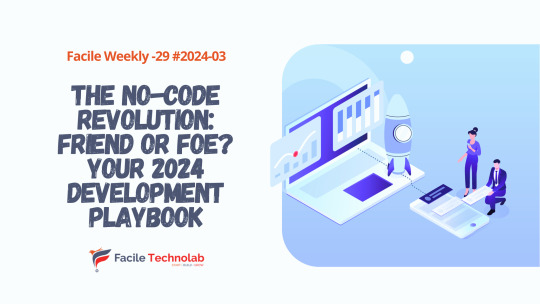
There's a crucial battle playing out: No-code, friend or foe? In your 2024 Development Playbook, we'll dissect the no-code hype, unveil its strengths and limitations, and equip you with the strategic insight to harness its power without sacrificing control.
The no-code revolution is no longer a whisper – it's a thundering drumbeat pounding across the tech landscape. With a projected market size of $36.43 billion by 2027, a CAGR of 31.1%, and an estimated 70% of new applications utilizing no-code or low-code technologies, the question isn't "if" you should incorporate it, but "how."
But hold on! Before you rush headfirst into the no-code vortex, take a breath. There's a crucial battle playing out: No-code, friend or foe? In your 2024 Development Playbook, we'll dissect the no-code hype, unveil its strengths and limitations, and equip you with the strategic insight to harness its power without sacrificing control. Stay tuned – the journey to unlocking your development potential starts now!
No-code platforms like Webflow, Bubble, and Adalo aren't just for tinkering anymore. They're empowering individuals and businesses to create real-world applications that are shaking up the game. Forget static brochures – think:
Thriving marketplaces: Swapstack, built on Bubble, crossed $500k in GMV in just months, connecting buyers and sellers with ease.
Viral social hubs: NotRealTwitter, a Twitter clone coded on Bubble, reached millions of users, proving no-code can handle high traffic and engagement.
Engaging learning experiences: Tiny Acquisitions, also powered by Bubble, became a finalist in a prestigious tech awards, showcasing the capabilities of no-code in building complex platforms.
Streamlined internal tools: Flexiple, using a mix of no-code tools, saved over 160 hours per month by managing internal processes effectively.
But wait, are these just one-hit wonders? The answer is a resounding no. Companies across industries are finding success with no-code:
Marketing & Sales: Landing pages, funnels, and even entire CRMs are being built and optimized with stunning results.
Internal Collaboration: Project management tools, communication platforms, and even custom dashboards are springing up with remarkable efficiency.
Data Visualization: Interactive dashboards and reports are being built in minutes, pulling data from multiple sources and making insights clearer than ever.
Prototyping & MVPs: Testing ideas and gathering user feedback has never been faster or more cost-effective thanks to no-code's rapid prototyping capabilities.
Diving Deeper: Industry-Specific No-Code Wins
E-commerce: No-code platforms like Shoptet and Squarespace are changing the game for small businesses, enabling lightning-fast online store creation and management without touching a line of code.
Education: Platforms like Kajabi and Thinkific empower educators and course creators to build beautiful, interactive learning experiences without the complexities of traditional development.
Real Estate: PropTech is booming, with platforms like Thynk allowing agencies to build custom listing portals and property management tools, streamlining workflows and enhancing client experience.
No-Code: Friend or Foe? The Limits of the Revolution
Hold on, before you stampede into the no-code sunset, let's acknowledge the chinks in this shiny armor. While no-code ignites possibilities, it also has boundaries. Here are some potential pitfalls to consider:
Complexity Ceiling: High-performance applications with complex logic, intricate databases, or heavy integrations might still require traditional coding expertise. Think: AI-powered platforms, intricate financial systems, or large-scale enterprise applications.
Scalability Roadblocks: Some no-code platforms struggle with scaling to handle massive user traffic or data needs. Remember, they exist within a specific system with inherent limitations.
Security Concerns: While security is constantly improving, some no-code platforms may not offer the same level of security and customization as custom-built solutions, especially for sensitive data.
Vendor Lock-in: Be wary of becoming too reliant on a specific platform. Data migration can be messy, and switching platforms later might prove problematic.
When No-Code Fizzled
Not all no-code ventures are fairy tales. Remember FinTech darling Clara? Built completely on Bubble, their rapid growth quickly hit scalability limitations, forcing them to migrate to a custom solution. This highlights the potential for disappointment when exceeding a platform's capacity.
But remember, no-code isn't the villain. It's a powerful tool, but using it wisely is key. In the next section, we'll explore how to strike the perfect balance between no-code magic and custom code mastery, crafting the winning development strategy for your unique needs. Stay tuned!
Custom Code: The Steady Hand in the Innovation Rodeo
While no-code grabs headlines, the custom software development market remains a powerhouse for a reason. It offers unmatched flexibility, control, and scalability, making it the go-to solution for complex projects where off-the-shelf solutions simply can't keep up. So, when should you saddle up with custom code?
Mission-Critical Systems: Think healthcare platforms, financial transactions, or large-scale data analysis. These scenarios demand the security, customization, and performance that only custom-built solutions can provide.
Intricate Integrations: Connecting multiple platforms, legacy systems, and custom APIs requires the precision and flexibility of bespoke coding. No-code platforms might not offer the necessary granularity for seamless integration.
Unique User Experiences: Creating truly innovative and personalized user experiences often goes beyond the pre-built features of no-code platforms. Custom development allows you to craft the perfect interaction from scratch.
Scalability for Beyond: No-code platforms may face limitations as your user base or data volume explodes. Custom code gives you complete control over scalability, ensuring your system can grow alongside your ambition.
Beyond the Blank Slate: Open Source Superpowers
Remember, custom development doesn't mean starting from scratch. Open-source libraries and frameworks like .NET Core, ASP.NET Core MVC, and Entity Framework Core can significantly reduce development time and risk. These pre-built components offer robust functionality, security, and a vibrant community for support. Think of them as building blocks that accelerate your custom development journey.
But for specific needs, even more specialized open-source options exist. Consider:
Content Management Systems: Umbraco shines for building flexible and scalable websites with powerful content editing capabilities. Need a feature-rich e-commerce platform? OpenCart is a robust open-source option.
SaaS Development Frameworks: ASP.NET Zero provides a strong foundation for building secure and scalable SaaS applications, empowering you to focus on your unique application logic.
API Development & Integration: NSwag simplifies API development and documentation, while Swashbuckle lets you integrate OpenAPI specs into your .NET APIs with ease.
By leveraging these specialized open-source tools, you gain even greater control and efficiency:
Faster Development: Pre-built features and functionalities jump-start your project, eliminating the need to create them from scratch.
Reduced Costs: Utilizing open-source solutions saves you significant development costs compared to building everything from scratch.
Increased Security: Proven and tested code from established communities minimizes security vulnerabilities and risks.
Simplified Customization: Customize these frameworks to fit your specific needs and build tailored solutions for your unique challenges.
Open source and custom development become even more powerful when combined. This is where Facile Technolab comes in
Facile Technolab: Riding the Open Source Wave with You
At Facile Technolab, we're not just code wranglers – we're open-source champions. We leverage the power of .NET Core and its incredible ecosystem of frameworks like Umbraco, ASP.NET Zero, and Abp.io and many more frameworks to craft tailor-made solutions that meet your exact needs.
We believe in the magic of open-source: faster development, lower costs, and greater control. But we also know it can be a wild ride. That's where our expertise comes in.
Our developers are open-source wizards, fluent in the language of frameworks and brimming with experience in building:
Dynamic websites and content-rich portals: Umbraco, Orchard, Kentico, and many more framework becomes your playground for crafting engaging user experiences with ease.
Secure and scalable SaaS applications: ASP.NET Zero, Abp.io and ASP.NET Boilerplate provides the rock-solid foundation for your SaaS dreams, ready to conquer the cloud.
But we don't stop there. We believe in going beyond the framework and listening to your unique voice. We customize, integrate, and extend open-source tools to fit your specific requirements, because a one-size-fits-all approach doesn't cut it in the world of software.
Ready to harness the power of open-source and custom development, with a team of experts by your side?
Schedule a free consultation to discuss your project and discover how Facile Technolab can unlock your open-source potential.
Follow us on LinkedIn for the latest open-source insights and expert advice.
Remember, Facile Technolab: your open-source partners in crafting the perfect software solution.
#saas development company#saas development services#outsourcing saas development#saas development agency#saas application development service#saas application development solutions#saas app development services
0 notes
Text
A Comprehensive Exploration of 10 .NET 8.0 Enhancements Transforming the Blazor Ecosystem

Dive into the future of web development with our in-depth analysis of 10 .NET 8.0, dissecting the groundbreaking improvements that have revolutionized the Blazor framework, propelling it to new heights of performance and functionality.
The latest release of .NET 8 brings significant additions and changes to ASP.NET Core. The most notable enhancements for this release of ASP.NET Core are related to the Performance and Blazor alongside the updates regarding the AOT, Identity, SignalR, Metrics and many more features.
Microsoft announced that ASP.NET Core in .NET 8 is the most performant released version so far, and as stated, when compared to .NET 7, ASP.NET Core in .NET 8 is 18% faster on the Techempower JSON benchmark and 24% faster on the Fortunes benchmark. Brennan Conroy wrote a blog post about Performance Improvements in ASP.NET Core 8 and readers are recommended to take a look into this.
1. Enhanced Navigation & Form Handling
Say goodbye to clunky page reloads! Blazor now intelligently updates the DOM with server-rendered content, resulting in seamless navigation and form interactions that feel like a native single-page application.
2. Choose Your Render Mode at Runtime
Need more flexibility? .NET 8.0 lets you dynamically switch between server-side and interactive render modes for individual components, giving you granular control over your app's behavior.
3. Streaming Rendering Preserves DOM
Blazor now paints components progressively, preserving existing DOM elements and avoiding unnecessary refreshes. This translates to blazing-fast performance and a more responsive user experience.
4. QuickGrid
Say Hello to Data Tables Made Easy: Forget about writing tons of boilerplate code for data grids. QuickGrid is a new built-in component that handles sorting, filtering, and pagination out of the box, making your life easier and your tables prettier.
5. Improved Authentication
Integrate authentication into your Blazor apps with greater ease thanks to built-in support for OpenID Connect and improved integration with Microsoft Identity Platform.
6. Razor Component Result
Generate static HTML content with your Blazor components! This opens up new possibilities for pre-rendering content and improving SEO.
7. Sections
Modular Layouts Made Simple: Define flexible content areas in your app layout with "Sections" and dynamically fill them with components. This promotes code reuse and keeps your layouts organized.
8. Jiterpreter for Blazor WebAssembly
Get ready for faster Blazor WebAssembly apps! The new Jiterpreter improves component execution speed, making your WebAssembly apps feel native and responsive.
9. Enhanced Routing with Named Elements
Route to specific elements within your Blazor pages using URL fragments, providing finer-grained control over navigation and deep linking.
10. Cascade Query String Values
Pass query string values directly to your Blazor components, simplifying data transmission and making your development workflow more streamlined. Bonus: Blazor Server Interactivity in Web Apps: While still in preview, this feature opens exciting possibilities for running interactive logic on the server for Blazor WebAssembly apps, potentially bridging the gap between the two models.
Ready to get blazing? These are just some of the amazing improvements that await you in .NET 8.0. So, upgrade your projects, explore these new features, and build the next generation of web applications that are fast, dynamic, and simply delightful to use.
#saas development company#saas development services#outsourcing saas development#saas development agency#saas development companies#saas application development service#saas app development services#saas application development solutions
0 notes
Text
How we built a Marketplace Platform MVP and integrated Generative AI
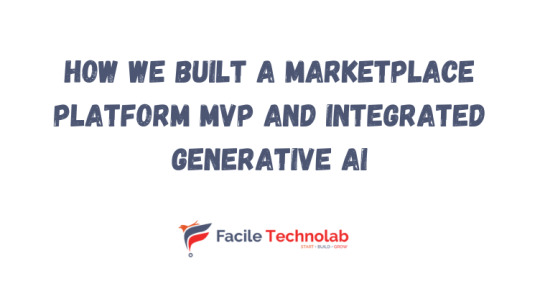
In this article, we will cover how our team helped launch an online marketplace platform mvp.
I'm going to share a story of our collaboration with one of our existing client. He has an amazing idea to innovate the way corporate event happens in the industry.
The client has good understanding of managing software projects. The client believed design thinking and building prototypes is key step to succeed. So, when our first engagement happened, the client had a figma prototype of 60% of the system ready.
The client's expectation was to get guidance on certain areas of the application. He also wanted to hire a team that converts the figma design into working system from start to finish. Since client had prior experience working with us, they contacted us for this new project.
The Marketplace MVP
The marketplace MVP was very easy to use. Being a corporate user, you are organizing corporate event. So, you will use the site to search for service providers. You will request for proposal. For each of the services you need, you can shortlist the quotation received.
Being a vendor, who serves corporate events, you can add your business and services. You can accept the RFP if it's relevant. Generate quote for the RFP received. Get confirmation of acceptance or rejection from the users.
The key features
The key features that we identified during discovery sprint are:
Responsive UI: Users should be able to use the system in the desktop, tablet and mobile devices.
Multilanguage: System should auto detect the user language from the browser. Ability for users to choose/switch their language.
Social Authentication: Ability for users to login with their Google and Facebook accounts.
Google Maps: Ability for users to see a maps view of the business or service listings
Marketing Plans: Monthly subscription for vendors to promote their listings.
Add Ons: One time add Ons for vendors to verify their business, paid profile setups, photo suites etc.
Listings: Ability for users to see the services based on city, category, and other filters.
Request for Proposal: Ability for users to request for proposals from the listing
Receive Quotes: Ability for users to receive quote from the interested vendors
Approve/Reject Quote: Ability for users to shortlist the quote.
ChatGPT Integration: ChatGPT API will help users to generate the language specific content. Here are some examples:
Ability for vendors to generate business and service listing description
Ability for users to generate request for proposal description
Ability for vendors to generate quote
Our approach
We started with a discovery sprint and shortlisted the in scope features. We also identified the gap in the Figma design prototypes and suggested improvements. At the end of the discovery sprint we had vision of in scope mvp features, timeline and budget.
Tech Stack: React.js, Next.js, Redux and Javascript in the front-end. ASP.NET Core, REST API, ASP.NET Web API, Entity Framework Core Code First, Azure SQL, Azure Storage used for back-end. We hosted both back-end and front-end applications in the Azure App Services.
The client engages throughout the project. Client received the dev site hosted on azure after first two sprints. Our team kept updating the dev site after every sprint. The client had flexibility to review and change things as we go.
The result
As we proceed towards the sprints, the client added some important features. Also, updated the UX for some of the modules to be more user friendly. Integrating stripe, google map, language and culture detection was also tricky. Finally, our team deliver all the MVP features with 100% client satisfaction.
Our team stood by the client for any support needed during the beta launch. We will be supporting client as they will go live with the full launch in Jan 2024.
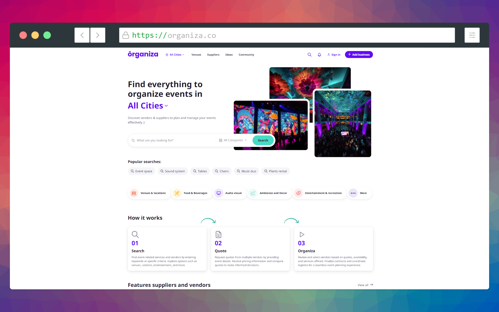
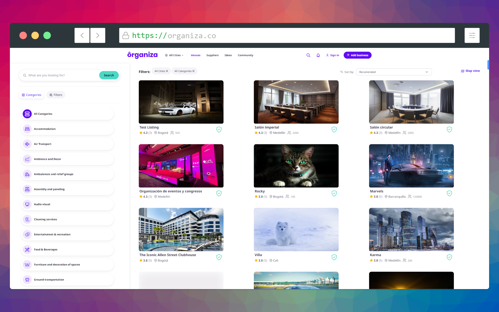
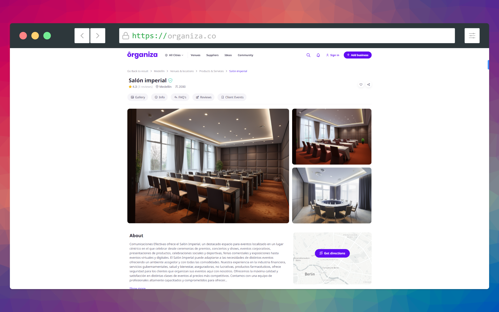
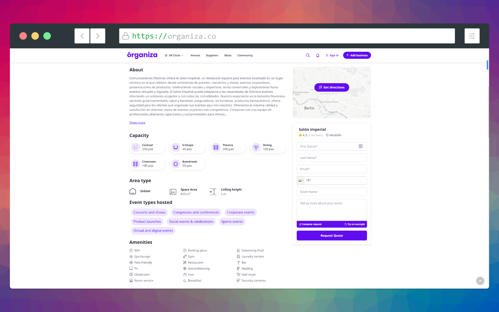
Conclusion
It was yet another successful project delivered! Our first product idea of building a marketplace platform mvp turned into reality! Subscribe to our newsletter to receive a notification as we publish related case study on our website.
Related case study: Online Marketplace Platform MVP for Event Management Industry

#saas development company#saas development services#saas development agency#saas application development service#saas application development solutions#saas app development services#saas development companies
0 notes
Text
From Vision to Reality: Building a Thriving Online Marketplace in 2024
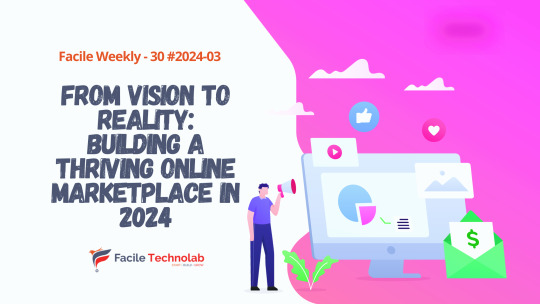
Are You the Next Marketplace Hero? Unleash Your Potential with Facile Technolab by Your Side
Ever dreamt of owning a bustling digital bazaar, connecting buyers and sellers with endless possibilities? Online marketplaces aren't just a futuristic fantasy anymore; they're the powerhouse business model propelling e-commerce into the next era. With global online marketplace sales projected to reach a staggering $3.5 trillion by 2024 (Statista, 2023), and 17% of all transactions predicted to go through e-commerce marketplaces (WebinarCare, 2024), the time to jump on this digital bandwagon is now.
Not just niche players, established industries are embracing the power of marketplaces: 47% of digital purchases worldwide already happen via online marketplace platforms (WebinarCare, 2024). From bustling e-commerce hubs to specialized platforms like Flexiple saving over 160 hours per month through internal marketplace tools (Facile Technolab Blog, 2023), the opportunities are limitless.
From Dream to Reality: The Roadmap and Roadblocks
Building a thriving online marketplace platform is as exhilarating as it is demanding. While statistics paint a rosy picture – with global sales projected to reach a staggering $3.5 trillion by 2024 – the journey from vision to reality is paved with its fair share of hurdles. These aren't insurmountable mountains, but they're definitely potholes that can snag your momentum if you're not prepared.
The Platform Labyrinth: Choosing the right platform is like finding the perfect key in a vast labyrinth. With a dizzying array of options each boasting unique strengths and limitations, navigating this landscape can be bewildering. Do you go for the tried-and-tested powerhouse with robust features but limited flexibility? Or do you dare explore the nimble newcomers offering sleek interfaces but untested reliability? The wrong choice can lead to compatibility woes, scalability nightmares, and ultimately, a frustrated user base lost in the digital wilderness.
The Engagement Enigma: Attracting users is one thing, keeping them engaged is another. In the attention-deficit digital era, your marketplace needs to be more than just a virtual storefront. It needs to be a vibrant community, a destination, a hub of experience. Building user trust and loyalty requires a laser focus on intuitive design, seamless interactions, and constant evolution. Neglect these principles, and your precious users will flit away like butterflies to the next shiny platform offering just a touch more excitement.
The Monetization Maze: Ah, the age-old question – how do you make money? Monetization for online marketplaces is no cookie-cutter affair. From transaction fees and subscription models to advertising and strategic partnerships, the options are plentiful, but the path to profitability can be a twisty maze. Finding the right balance between user experience and revenue generation is a delicate dance. Misstep on either side, and you risk either alienating your users or leaving money on the table.
These are just a few of the roadblocks that lie in wait on the path to online marketplace success. But they're not insurmountable. With the right planning, resources, and – yes – a bit of grit, these challenges can be transformed into stepping stones on your journey to building a thriving digital bazaar. Stay tuned as we delve deeper into these hurdles and reveal strategies to navigate them with confidence, turning your marketplace dream into a reality that rings with the happy cacophony of satisfied buyers and sellers.
Facing the Challenges, Forging Your Path: Facile Technolab by Your Side
While the online marketplace arena glitters with potential, the road to your MVP isn't without its detours. Choosing the right platform can feel like traversing a labyrinth blindfolded, each avenue promising its own advantages and limitations. Facile Technolab stands beside you, your seasoned cartographer, illuminating the path and helping you select the platform that will weather the storms of growth and adapt to your evolving vision. Remember Flexiple, the company saving 160 hours monthly through internal marketplace tools? We were their guide, navigating the platform labyrinth and ensuring a foundation that scaled alongside their success. (Read their story here: How we built a Marketplace Platform MVP and integrated Generative AI)
Engagement, the lifeblood of any marketplace, can be a fickle beast. Failing to captivate users leaves your platform an echoing wasteland. We are the whisperers of user experience, adept at crafting intuitive interfaces, fostering vibrant communities, and keeping users coming back for more. The thriving event management platform we helped launch is a testament to our expertise in attracting and retaining loyal user bases. (Dive deeper into their journey here: Online Marketplace Platform MVP for Event Management Industry)
The online marketplace landscape beckons, a shimmering mirage of endless possibilities. But amidst the excitement, remember - every hero needs a trusted guide. With Facile Technolab by your side, you don't just face the challenges, you conquer them. We'll be your mapmaker through the platform labyrinth, your storyteller in the Engagement Enigma, and your alchemist in the Monetization Maze.
Ready to transform your online marketplace platform dream into a reality that echoes with the happy cacophony of success? Schedule a free consultation with our experts today, and let's chart the course to your digital victory. We'll equip you with the tools, strategies, and unwavering support to write your own marketplace legend.
Don't just envision your triumph, claim it. Partner with Facile Technolab and embark on your epic marketplace journey now.
#saas development company#saas application development services#saas app development services#saas development services#outsourcing saas development#saas application development company#saas development agency#saas app development company
0 notes
Text
Unveiling MAUI - Your Essential Guide to Revolutionize Cross-Platform App Development!

Discover the innovative power of Microsoft's Multi-platform App UI (MAUI), as we navigate through the intricacies of building seamless applications for diverse platforms, ushering in a new era of efficiency and innovation.
Introduction to MAUI
Microsoft has introduced the highly anticipated Blazor framework in ASP.NET Core 3.0. In .NET 5.0, Blazor received significant updates to its component model, plus speed improvements and pre-rendering capabilities. Blazor's initial focus was to allow developers to target the browser using the .NET stack with little or no JavaScript required, all without a single browser plug-in. The key to Blazor's success is its ability to enable .NET developers by leveraging their existing skills. Using Blazor, .NET developers can build a full-stack application using only .NET technologies.
In .NET 6.0, the Blazor framework finds yet another path for developer success with .NET MAUI. MAUI provides a set of technologies that enable apps to run on Web, desktop, and mobile. This new pattern is named Blazor Hybrid and, once again, developers are empowered to use their existing skills to reach even more ecosystems. With Blazor Hybrid, native desktop on Android, iOS, macOS, and Windows are now within reach.
.NET MAUI framework provides support for data-binding; cross-platform APIs for accessing native device features like GPS, accelerometer, battery and network states; a layout engine (for designing pages) and cross-platform graphics functionality (for drawing, painting shapes and images).
The promise of .NET MAUI is that you’ll be able to build a single app and have it run on all four operating systems. But it goes even further when you add Blazor to the mix.
Who’s It For? This ability to create a native application with a UI written using HTML and CSS makes it a particularly useful option if you’re already comfortable building for the web. It means you can take all your existing knowledge, skills and experience, and turn it toward building a native app.
At this early stage, it looks like there are three primary use cases for adopting .NET MAUI (with Blazor).
As a web/Blazor developer, to take your existing Blazor app and run it natively on mobile and desktop
As a web/Blazor developer, to make a brand-new native app using your existing skills
As a desktop developer, to use Blazor for some or all of your app, potentially bringing in Blazor components from the community and/or any existing web applications to which you have access
How Do Blazor Hybrid Apps Work? .NET MAUI ships with a handy control called BlazorWebView.
The name here can be a little misleading, as it conveys a sense that you’re still running your Blazor app as a web application, somehow disconnected from the native hardware of the device you’re running it on.
In reality, while BlazorWebView is indeed enabling you to host your Blazor web app in a .NET MAUI app, the app isn’t running on WebAssembly (as you might initially assume) or some other browser-based technology.
You don’t need a web server or some other way to host your application.
Your .NET Blazor hybrid app will be running 100% natively, on the device, not via HTTP and not contained within the browser sandbox (which you’re usually limited to when running a web application).
Indeed, the only “web” part of your application is the UI, which is built using HTML and CSS and rendered into a web view control. All your actual code, application and business logic is running locally on the device.
As a result, Blazor with .NET MAUI offers a convenient way of building your application, using familiar paradigms, tooling and design-time experience, while bringing the benefits of running a native application (including access to native APIs like GPS and accelerometer APIs for the native device).
Frequently Asked Questions:
What is MAUI, and how does it differ from Xamarin?
MAUI, or Multi-platform App UI, is Microsoft's evolution of Xamarin, offering a unified framework for cross-platform app development. It builds upon Xamarin's foundation, providing enhanced features and improved capabilities.
What platforms does MAUI support for app development?
MAUI allows developers to create applications for Android, iOS, macOS, and Windows with a single codebase, providing a comprehensive solution for cross-platform development.
How does MAUI ensure native performance across different platforms?
MAUI achieves native performance by leveraging the underlying platform's APIs and rendering the user interface components natively, ensuring a smooth and responsive experience on each device.
Can developers customize the user interface for specific platforms with MAUI?
Yes, MAUI provides the flexibility to customize the user interface for each platform, allowing developers to create a tailored experience while maintaining a shared codebase.
What role does .NET play in MAUI development?
MAUI is built on the .NET platform, allowing developers to utilize the powerful features of .NET for cross-platform app development. It seamlessly integrates with Blazor for building hybrid apps.
How does MAUI enhance productivity with Hot Reload?
MAUI features Hot Reload, enabling developers to make changes to the code and see the results in real-time. This boosts productivity by reducing development cycles and facilitating a more iterative approach.
What makes MAUI a game-changer in the world of cross-platform app deployment?
MAUI revolutionizes app deployment by offering a unified approach, allowing developers to write code once and deploy it across multiple platforms, eliminating the need for separate codebases.
Can developers transition smoothly from Xamarin to MAUI?
Yes, developers familiar with Xamarin will find a smooth transition to MAUI. MAUI is designed as an evolution of Xamarin, maintaining compatibility and easing the migration process.
How does MAUI contribute to the future of app development?
MAUI sets a new standard by simplifying cross-platform development, empowering developers to create cutting-edge applications that seamlessly adapt to various devices, setting the stage for the future of app development.
What topics will be covered in this series, 'Unveiling MAUI'?
This series will cover a range of topics, including the foundational principles of MAUI, advanced features, best practices, and real-world examples, providing a comprehensive guide for developers looking to master the art of cross-platform app development with MAUI.
#saas development company#saas development services#saas development companies#saas application development service#saas development agency#saas app development services#outsourcing saas development
0 notes
Text
10 Starter template to use for your next .net core microservice project
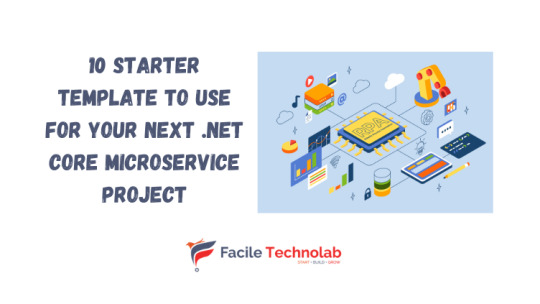
Embark on your next .NET Core microservice journey with ease using these ten meticulously crafted starter templates.
Introduction: The blog - 10 Starter template to use for your next .net core microservice project explores ten meticulously curated starter templates designed to kickstart your next .NET Core microservices project. From minimalist configurations to templates tailored for specific architectural patterns, each option is crafted to save you time, enforce best practices, and provide a robust starting point for building scalable and maintainable microservices applications. Let's dive into the world of .NET Core microservices development and discover the template that aligns perfectly with your project goals.
Minimalist Microservice Template: Keep it simple with a lightweight template that includes only the essentials. This template provides a clean structure and allows you to add components as needed.
Event-Driven Microservices Template: If your microservices architecture leans towards event-driven communication, this template comes with pre-configured event bus integration and sample events to kickstart your project.
API Gateway Template: For projects requiring an API gateway to manage incoming requests, this template sets up a gateway with basic routing and load balancing capabilities.
Dockerized Microservices Template: Embrace containerization from the beginning. This template is configured for Docker, making it easier to deploy and manage your microservices in a containerized environment.
Authentication-Ready Template: Security is paramount. This template includes a robust authentication and authorization setup, ensuring that your microservices are protected from unauthorized access.
GraphQL Microservices Template: If you're considering GraphQL for your microservices communication, this template provides a structured setup with GraphQL endpoints for seamless data querying.
Database-First Microservices Template: Start with a template that is designed around your database schema. This approach can be beneficial when your microservices need to interact with an existing database.
CQRS and Event Sourcing Template: The CQRS (Command Query Responsibility Segregation) and Event Sourcing architectural patterns have gained widespread recognition for their ability to enhance scalability and maintainability in microservices applications. The CQRS and Event Sourcing template serves as an invaluable resource for developers venturing into this advanced territory within .NET Core microservices. This template is meticulously crafted to support the separation of command and query responsibilities, allowing for independent scaling of these operations. Additionally, it embraces Event Sourcing, a method where every state change in the application is captured as an immutable event. Monitoring and Logging Template: Ensure your microservices are observable from the get-go. This template includes integrated logging and monitoring tools, making it easier to track and analyze the behavior of your services.
Multi-Tenant Microservices Template: If your application requires multi-tenancy support, use this template that's designed to handle multiple tenants securely, ensuring data isolation and efficient resource utilization.
Conclusion: Selecting the right starter template for your .NET Core microservices project is a crucial decision that can significantly impact the development process. Choose wisely based on your project requirements, and leverage these templates to accelerate your development, maintain consistency, and adhere to best practices. Happy coding!
#saas development company#saas development services#saas application development solutions#saas development agency#saas development companies#outsourcing saas development#saas application development service#offshore software development#saas app development services
0 notes
Text
How to Build a 10x More Efficient B2B SaaS Platform in 2024
SaaS development company in 2024 requires navigating a complex landscape of options. From the allure of no-code to the freedom of open-source and the efficiency of paid starter kits, choosing the right path can feel like a daunting task. Worry not, intrepid innovator! Facile Technolab is here to be your trusted guide, illuminating the best strategy for your unique B2B SaaS vision.
0 notes
Text
How to Build a 10x More Efficient B2B SaaS Platform in 2024
SaaS development company in 2024 requires navigating a complex landscape of options. From the allure of no-code to the freedom of open-source and the efficiency of paid starter kits, choosing the right path can feel like a daunting task. Worry not, intrepid innovator! Facile Technolab is here to be your trusted guide, illuminating the best strategy for your unique B2B SaaS vision.
0 notes
Text
How to Build a 10x More Efficient B2B SaaS Platform in 2024
SaaS development company in 2024 requires navigating a complex landscape of options. From the allure of no-code to the freedom of open-source and the efficiency of paid starter kits, choosing the right path can feel like a daunting task. Worry not, intrepid innovator! Facile Technolab is here to be your trusted guide, illuminating the best strategy for your unique B2B SaaS vision.
0 notes
Text
How to Build a 10x More Efficient B2B SaaS Platform in 2024
SaaS development company in 2024 requires navigating a complex landscape of options. From the allure of no-code to the freedom of open-source and the efficiency of paid starter kits, choosing the right path can feel like a daunting task. Worry not, intrepid innovator! Facile Technolab is here to be your trusted guide, illuminating the best strategy for your unique B2B SaaS vision.
0 notes
Text
How to Build a 10x More Efficient B2B SaaS Platform in 2024
SaaS development company in 2024 requires navigating a complex landscape of options. From the allure of no-code to the freedom of open-source and the efficiency of paid starter kits, choosing the right path can feel like a daunting task. Worry not, intrepid innovator! Facile Technolab is here to be your trusted guide, illuminating the best strategy for your unique B2B SaaS vision.
0 notes
Text
https://justpaste.it/emw1y
How to Build a 10x More Efficient B2B SaaS Platform in 2024
SaaS development company in 2024 requires navigating a complex landscape of options. From the allure of no-code to the freedom of open-source and the efficiency of paid starter kits, choosing the right path can feel like a daunting task. Worry not, intrepid innovator! Facile Technolab is here to be your trusted guide, illuminating the best strategy for your unique B2B SaaS vision.
0 notes
Text
How to Build a 10x More Efficient B2B SaaS Platform in 2024
SaaS development company in 2024 requires navigating a complex landscape of options. From the allure of no-code to the freedom of open-source and the efficiency of paid starter kits, choosing the right path can feel like a daunting task. Worry not, intrepid innovator! Facile Technolab is here to be your trusted guide, illuminating the best strategy for your unique B2B SaaS vision.
0 notes
Text
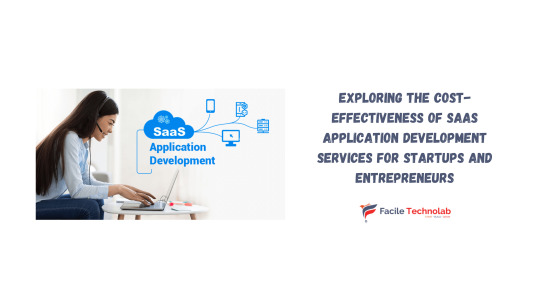
The digital age has ushered in an era where software is no longer a monolithic expense, but a subscription-based service. SaaS, or Software as a Service, has revolutionized how businesses operate, from startups to enterprises. However, the question remains: Is building a custom SaaS application truly cost-effective for startups and entrepreneurs?
0 notes
Text
How to Build a 10x More Efficient B2B SaaS Platform in 2024
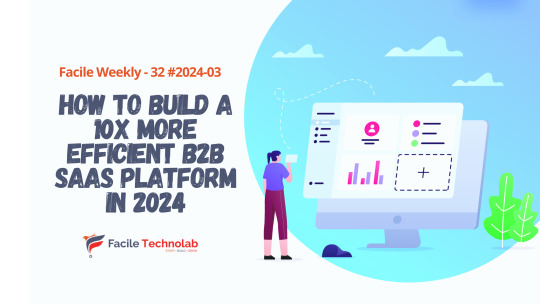
The year is 2024, and the B2B SaaS landscape is hotter than ever. From healthcare to manufacturing, every industry is embracing the power of software-as-a-service solutions to streamline operations, enhance customer experiences, and unlock explosive growth.
The market is projected to reach a staggering USD 1088 billion by 2030, and ambitious entrepreneurs are seizing the opportunity.
But with fierce competition and ever-evolving technologies, SaaS development company requires more than just a great idea. You need an edge, a way to outpace your rivals and achieve 10x more efficiency in your development process.
Demystifying the B2B SaaS Development Process in 2024
While trends paint a broad picture, building a successful B2B SaaS platform requires diving deeper into the practical tools and technologies shaping development today. So, buckle up, and let's delve into the nuts and bolts:
The Tech Stack Symphony: The architecture of modern B2B SaaS platforms is often a harmonious blend of technologies. Cloud computing reigns supreme, with platforms like AWS, Azure, and Google Cloud Platform providing scalable infrastructure and a plethora of on-demand services. For data persistence, modern SQL databases like PostgreSQL and NoSQL databases like MongoDB offer flexibility and high performance.
Microservices Take the Stage: Gone are the days of monolithic architectures. Developers are increasingly adopting microservices architectures, breaking down functionalities into independent, loosely coupled services. This approach promotes agility, scalability, and faster deployment cycles.
Containerization Containers Success: Managing and deploying microservices efficiently requires orchestration. Containerization technologies like Docker and Kubernetes are game-changers, enabling developers to package applications in standardized units for seamless deployment across diverse environments.
APIs: The Glue that Binds: Seamless integration with other systems is crucial for B2B SaaS platforms. RESTful APIs and event-driven architectures facilitate smooth data exchange and communication between your platform and external applications.
The Security Fortress: Protecting user data is paramount. Modern B2B SaaS platforms leverage robust security protocols, including encryption, multi-factor authentication, and regular vulnerability assessments, to build trust and safeguard sensitive information.
The Feature Focus: Efficiency & Customer-Centricity: Beyond the tech stack, trending features are all about improving efficiency and user experience. Low-code/no-code development tools are empowering citizen developers to contribute, while AI-powered features like chatbots and predictive analytics enhance user engagement and personalization.
The No-Code Revolution: Democratizing B2B SaaS Development
For decades, building a B2B SaaS platform meant navigating complex coding languages and relying on specialized developers. But the winds of change are blowing, and the rise of no-code platforms is shaking up the landscape. These intuitive, drag-and-drop solutions are empowering entrepreneurs and businesses of all sizes to embark on their SaaS journeys without requiring extensive technical expertise.
The impact is undeniable. According to a recent study by Research and Markets, the no-code market is anticipated to reach a staggering $58.7 billion by 2027, with a significant portion of this growth driven by B2B SaaS development. This surge isn't just hype; it's fueled by several compelling benefits:
1. Lower barriers to entry: No-code platforms eliminate the need for expensive developers, making it easier for smaller companies and non-technical founders to participate in the B2B SaaS arena. This levels the playing field and fosters innovation.
2. Faster development cycles: The visual and intuitive nature of no-code platforms drastically reduces development time. This allows businesses to iterate quickly, test ideas rapidly, and get their MVPs to market much faster than traditional methods.
3. Increased agility and flexibility: No-code platforms are inherently adaptable, allowing businesses to easily modify their platforms as their needs evolve. This agility ensures responsiveness to market changes and customer feedback, enhancing long-term success.
4. Democratization of development: No-code empowers citizen developers within businesses to contribute to platform development. This can improve collaboration, leverage diverse skillsets, and unlock hidden potential within your organization.
5. Cost-effectiveness: By reducing reliance on expensive developers and shortening development cycles, no-code platforms can significantly lower the overall cost of building a B2B SaaS platform. This makes it a cost-effective solution for bootstrapped startups and resource-conscious businesses.
While no-code platforms aren't a magic bullet, they represent a powerful trend democratizing B2B SaaS development. By leveraging their capabilities, businesses can unlock agility, reduce costs, and accelerate their journey to SaaS success. The future of B2B SaaS is undoubtedly one where no-code plays a prominent role, and staying ahead of this curve can provide a significant competitive advantage.
No-Code's Allure, Open-Source's Freedom, & Paid Kits' Power: Beyond Building B2B SaaS From Scratch
The no-code revolution has undeniably democratized B2B SaaS development, but like any technology, it has its caveats. Pre-built components offer speed and affordability, but limitations in customization, potential vendor lock-in, and security concerns can hinder future growth. So, what's the alternative to starting from scratch and wrestling with complex code?
Open-Source SaaS Starter Kits: The open-source community offers a treasure trove of pre-built code frameworks tailored to specific industries. These kits provide:
Industry-Specific Focus: From healthcare to finance, find kits pre-equipped with features relevant to your niche, saving you development time and cost.
Customizable Foundation: The open-source nature grants you access to the underlying code, empowering you to tailor features and adapt the kit to your unique needs.
Community Support: Leverage the collective knowledge and expertise of the open-source community for troubleshooting, guidance, and ongoing development contributions.
However, remember:
Maintenance Burden: Keeping an open-source kit secure and updated falls on your shoulders, requiring technical expertise and resources.
Limited Support: While the community is helpful, dedicated technical support might be scarce compared to paid options.
Potential Security Risks: Open-source code can attract vulnerabilities if not diligently maintained and secured.
Paid SaaS Starter Kits: Striking a balance, paid starter kits offer industry-specific features, faster development, and varying levels of support at a premium. You'll typically find:
Enhanced Functionality: Paid kits often go beyond basic features, offering advanced functionalities and integrations to elevate your platform.
Dedicated Support: Paid services provide direct access to technical support teams, ensuring smooth implementation and addressing concerns promptly.
Managed Security: Many paid kits incorporate automated security updates and compliance measures, reducing your security burden.
However, consider these points:
Licensing Costs: The convenience of paid kits comes with monthly or annual licensing fees, adding to your development budget.
Vendor Lock-in: Switching platforms later might require data migration and re-implementing features, depending on the kit's architecture.
Limited Customization: While offering more flexibility than no-code platforms, paid kits might still have limitations compared to fully custom development.
The Bottom Line: Neither open-source nor paid starter kits are a magic bullet. Carefully evaluate your project's needs, budget, and technical resources. Open-source kits offer freedom and community support, but require technical expertise for maintenance. Paid kits provide faster development, security, and support, but come with licensing costs and potential vendor lock-in.
Remember, no single approach is universally ideal. Consider consulting with experts who understand the nuances of each option and can guide you towards the solution that perfectly aligns with your B2B SaaS vision. By making an informed decision, you can avoid the pitfalls of starting from scratch and leverage the power of starter kits to launch your B2B SaaS platform faster, more efficiently, and with greater long-term potential.
Unveiling Your Ideal B2B SaaS Path in 2024
SaaS development company in 2024 requires navigating a complex landscape of options. From the allure of no-code to the freedom of open-source and the efficiency of paid starter kits, choosing the right path can feel like a daunting task. Worry not, intrepid innovator! Facile Technolab is here to be your trusted guide, illuminating the best strategy for your unique B2B SaaS vision.
Why Facile Technolab is your champion:
Deep Industry Expertise: We possess in-depth knowledge of various B2B industries, ensuring we understand your specific challenges and opportunities.
Technology Agnostic Approach: We're not tied to any single solution. We objectively evaluate no-code platforms, open-source/paid saas starter kits, and custom development to recommend the perfect fit for your needs.
Unwavering Transparency: We believe in clear communication and honest assessments. We'll explain the pros and cons of each option, empowering you to make informed decisions.
Holistic Support: Our guidance extends beyond just technology. We help you define your target audience, craft a compelling value proposition, and develop a roadmap for sustainable growth.
Proven Track Record: We boast a portfolio of successful B2B SaaS implementations, showcasing our ability to deliver results that matter.
Let Facile Technolab help you:
Identify your B2B niche and target audience: We'll help you define your ideal customer, ensuring your platform solves their specific pain points.
Analyze your development needs: We'll assess your technical expertise, budget, and timeline to determine the most efficient approach.
Evaluate technology options: We'll provide unbiased comparisons of no-code platforms, open-source kits, and custom development, tailoring our recommendations to your unique requirements.
Navigate implementation & beyond: We'll be your partner throughout the development process, offering guidance, support, and expertise to ensure a seamless launch and long-term success.
Don't embark on this B2B SaaS journey alone. With Facile Technolab by your side, you'll gain the clarity, expertise, and support needed to choose the most efficient and effective path. Together, we can turn your B2B SaaS vision into a thriving reality in the dynamic landscape of 2024.
Contact Facile Technolab today and schedule a free consultation! Let's discuss your B2B SaaS aspirations and explore the optimal development strategy for your success. Remember, building a remarkable B2B SaaS platform doesn't have to be overwhelming. With the right guide at your side, you can navigate the complexities and achieve your goals with confidence.
Related Resources
Top 5 mistakes when hiring SaaS Development Team and How to avoid them
Related Services
SaaS Development
Related Case Studies
FinTech Modernization and SaaS Development Case Study
Manufacturing Execution System - SaaS Platform Development Case Study
Parking Management SaaS Platform Case Study
Job Management System SaaS Platform MVP for precision component manufacturing company in Australia
More Articles related to SaaS:
Why .NET Core is a popular choice for SaaS Development?
The Future of B2B SaaS Platform Development: 9 Emerging Trends to Watch in 2024
The 3 Hidden Obstacles Holding Back Your B2B SaaS Dream
Creating Your First B2B SaaS Platform MVP: A Comprehensive Tutorial
Building Cloud-Native B2B SaaS Software Solutions: Advantages and Strategies
Why B2B SaaS Software MVPs are the Secret Sauce for Startups
The Future of B2B SaaS Platform Development: 9 Emerging Trends to Watch in 2024
#SaaS development company#saas application development services#saas app development services#saas development services#outsourcing saas development#saas application development company#saas development agency#saas app development company#saas software development companies#saas development company in us
0 notes
Text
Power Up Your Blazor Project: Unveiling the Top 5 Admin Themes for Ultimate Efficiency
In the ever-evolving landscape of web development, enhancing the visual appeal and functionality of your Blazor project is paramount. In this blog, we delve into the realm of ultimate efficiency by unveiling the top 5 admin themes specially curated for Blazor applications.
0 notes